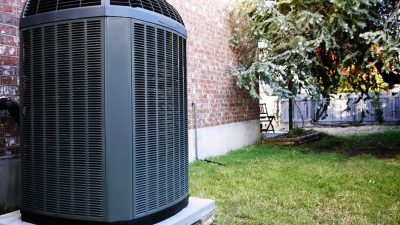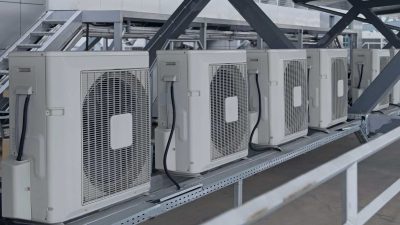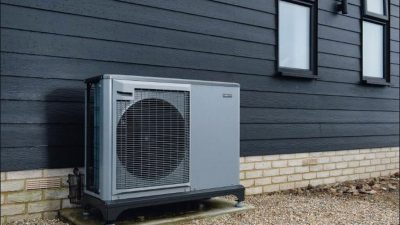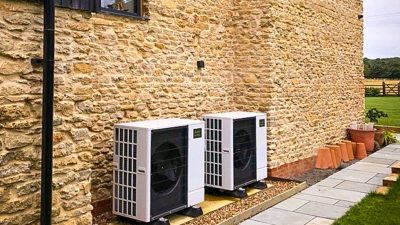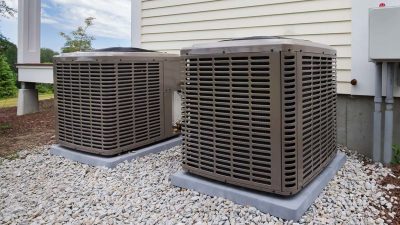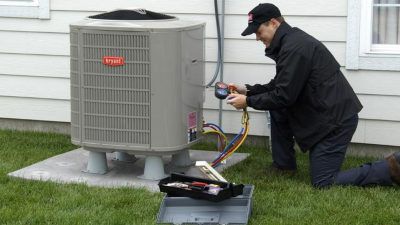Have you ever noticed the Emergency Heat setting on your heat pump? It can be intimidating to see a setting with such a serious name, but what does it actually mean?
Emergency heat, also known as auxiliary heat, is a backup heating source on a heat pump system that is designed to provide supplemental heating when the outdoor temperature drops below a certain point. When outdoor temperatures drop below the heat pump’s ability to extract heat from the air, the emergency heat kicks in to provide additional heat to the home.
Emergency heat is typically provided by an electric resistance heater or a gas furnace, which is activated when the heat pump is not able to provide sufficient heating on its own. While emergency heat can help maintain a comfortable temperature in your home when outdoor temperatures are very low, it can be less efficient than the heat pump and can increase your energy costs.
It’s worth noting that emergency heat should only be used in situations where the heat pump is unable to provide sufficient heating on its own, such as during extreme cold weather conditions. Using emergency heat as the primary heating source can result in higher energy bills and reduced efficiency, as the heat pump is designed to be the primary heating source.
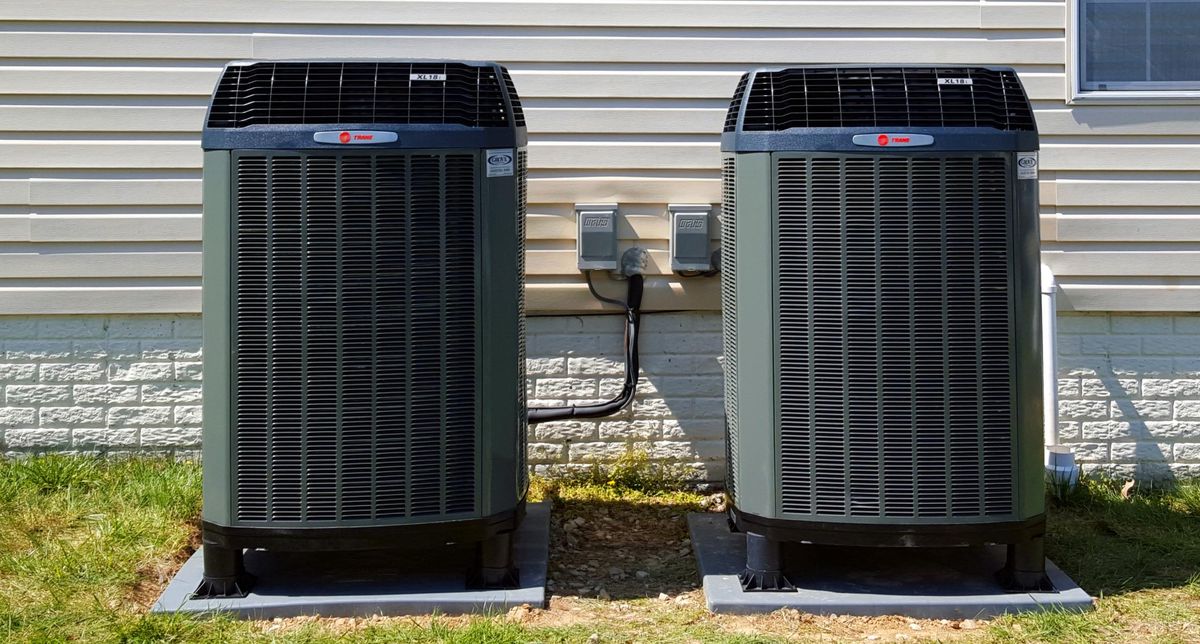
Overview Of Emergency Heat Setting
Emergency heat setting is a feature on many heat pumps that provides additional warmth when needed. It’s an efficient and cost-effective way to maintain comfortable temperatures in your home during cold winter months. The emergency heat setting works by drawing energy from an auxiliary power source such as a backup generator or electrical grid, rather than the pump itself. This allows the system to continue functioning even if the main power source is disrupted due to bad weather or other power outages.
The benefits of using emergency heat setting are clear: it keeps your family warm, saves money on energy bills, and keeps your home safe during cold winter days. Additionally, you can set up emergency heat settings for specific rooms or areas that need extra warmth without having to manually adjust the thermostat. Furthermore, the cost of operating this feature is minimal compared to the savings that can be had by utilizing it.
Advantages Of Emergency Heat Setting
Emergency heat is a great addition to any heat pump system. It has many advantages that make it a great choice for efficient, eco-friendly heating. One of the most notable benefits of emergency heat is the energy savings it offers. This setting allows you to conserve energy by only running when temperatures drop below freezing, and then shutting off automatically when the desired temperature has been reached. This can help you save money on your monthly energy bills, as well as helping you do your part to be eco-friendly.
Another great advantage of emergency heat is its efficiency. By using this setting, you can make sure that your home stays warm without having to constantly run the heat pump system at full power. This reduces wear and tear on the system and helps it last longer, saving you money in repair costs in the long run. Additionally, its efficiency means that emergency heat produces less carbon emissions than traditional heating systems, making it an excellent choice for those who want to reduce their environmental impact.
Emergency heat is an easy way to make sure your home stays comfortable while still keeping your energy usage low and helping preserve the environment. With its numerous benefits, such as cost savings, improved efficiency and eco-friendly operation, it’s no wonder why emergency heat is becoming more popular among homeowners looking for innovative ways to stay warm during cold winter months.
How To Activate Emergency Heat Setting
Now that you know the advantages of using the emergency heat setting on your heat pump, it’s important to know how to activate it. Activating emergency heat is a simple process, but it will vary depending on your particular model. Here are some tips on how to activate emergency heat:
- Read your owner’s manual for detailed instructions on how to activate emergency heat. Most manuals should include information about where the emergency heat switch is located and how to manually switch it on or off.
- Look for an emergency heat button or switch near the thermostat. This can usually be found at the bottom or side of the unit. If you don’t see a switch, check with your heating technician for more information about activating your system’s emergency heat setting.
- Ask your local HVAC technician if they have any special instructions for activating your system’s emergency heat setting. They may have specific recommendations based on the age and make of your system that could help you get the most out of this feature.
Most modern systems will require you to manually activate their emergency heat settings, so make sure you read your owner’s manual and understand how this feature works before attempting to use it. Being prepared can help ensure that you get maximum efficiency from your system when you need it most!
Cost Considerations For Emergency Heat Setting
The cost of setting a heat pump to emergency heat can vary depending on the type of system, installation costs, and energy efficiency. Emergency heat can increase your energy bills if used for an extended period of time due to its higher energy consumption. It’s important to weigh the cost considerations when deciding whether or not to switch your system over to emergency heat.
| Type of System | Installation Cost | Energy Efficiency |
|---|---|---|
| Split System Heat Pump | $1,000 – $4,000 | 8-10 SEER |
| Hybrid Heat Pump System | $4,500 – $11,000 | 14-20 SEER |
| Geothermal Heat Pump System | $7,500 – $25,000+ | 15-30 SEER |
When considering a heat pump’s emergency heat cost it’s important to think of long term savings. A split system may be cheaper up front but have lower efficiency than a geothermal or hybrid system could provide. A hybrid or geothermal system may offer more efficient energy usage in the long run which could save you money over time. Additionally, consider any additional components needed for installation that could influence the total cost such as ductwork or wiring upgrades.
No matter what type of system you decide on make sure you understand the potential risks associated with using emergency heat setting and the potential cost implications that come along with it. Make sure you are well informed before making a decision in order to ensure you get the most out of your investment.
Maintenance Tips For Emergency Heat Setting
Emergency heat, or emergency heat setting, is a feature found in most heat pumps. It helps to keep your home warm during power outages and other emergency situations. Knowing how to properly maintain your pump’s emergency heat setting can save you time and money in the long run.
Here are some maintenance tips for keeping your emergency heat setting running smoothly:
- Check for Obstructions: Regularly check the area around your outdoor unit for any obstructions that may be blocking airflow. This includes leaves, branches, snow, ice, and other debris.
- Check the System Controls: Make sure all system controls are working correctly and are set to the proper settings. This includes checking the fan speed and thermostat settings.
- Inspect Wiring: Inspect all wiring connections at least once a year to make sure they’re secure and free of any corrosion or damage.
- Replace Filters: Change air filters as recommended by your manufacturer in order to ensure optimal operation of your system.
- Schedule Professional Maintenance Visits: Have a professional technician inspect your system regularly to make sure it’s working properly and efficiently.
By following these tips, you can ensure that your emergency heat setting runs efficiently and safely when you need it most. Keeping up with regular maintenance will also help you save energy costs over time!
Conclusion
In conclusion, heat pumps are an energy-efficient way to heat and cool a home. They’re also equipped with an emergency heat setting, which can be extremely useful in certain situations. It’s important to understand the advantages of using this setting and how to activate it. Additionally, it’s important to consider the additional cost associated with operating your system in emergency heat mode and to make sure you maintain your system regularly for optimal performance.
I highly recommend familiarizing yourself with the emergency heat setting on your heat pump so you can take advantage of its benefits when necessary. Learning about the proper maintenance tips for your system is also crucial so you can ensure that it runs smoothly and efficiently all year long. With the right knowledge and preparation, a heat pump with an emergency heat setting can help keep your home comfortable even during extreme weather conditions.

